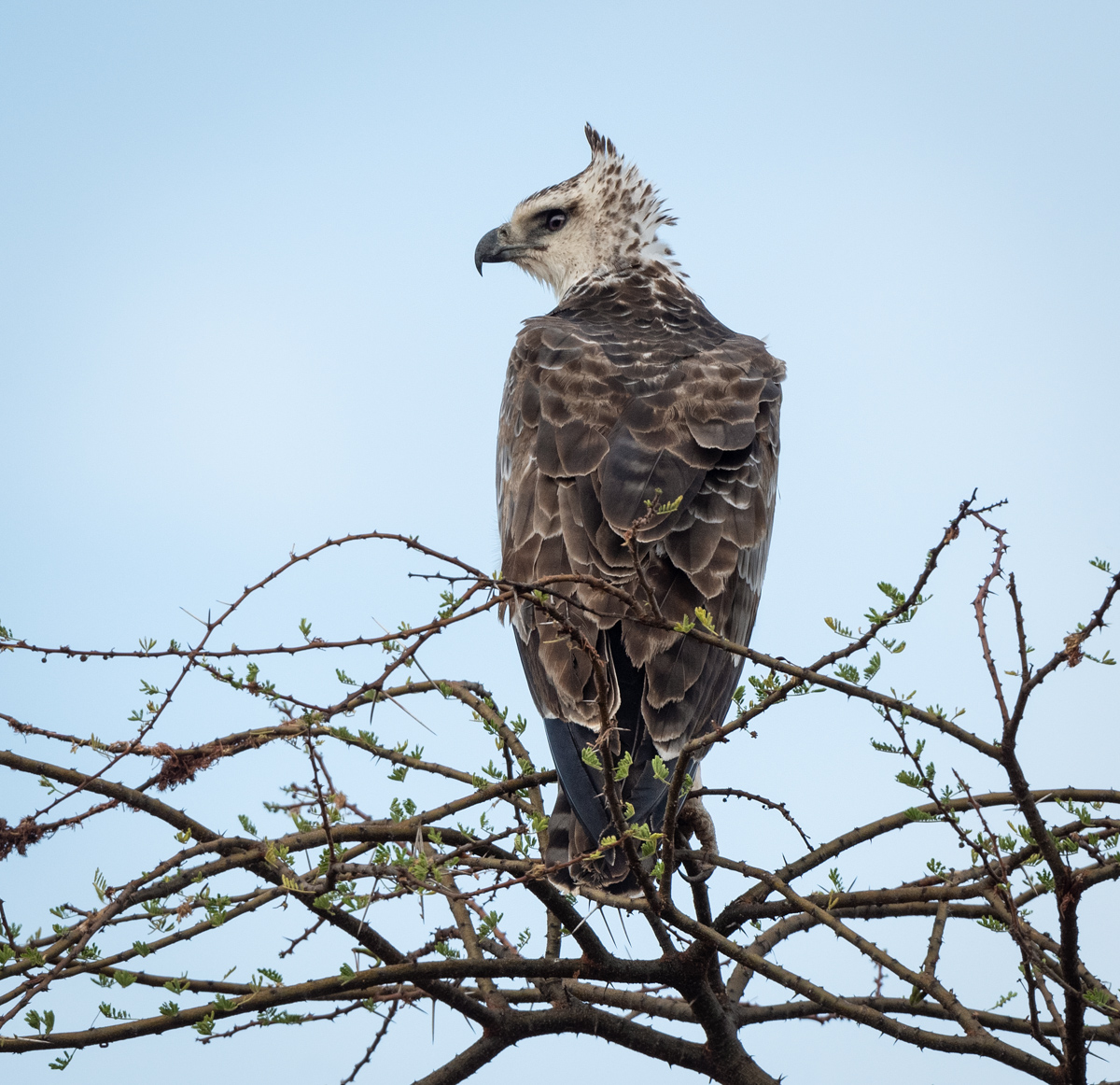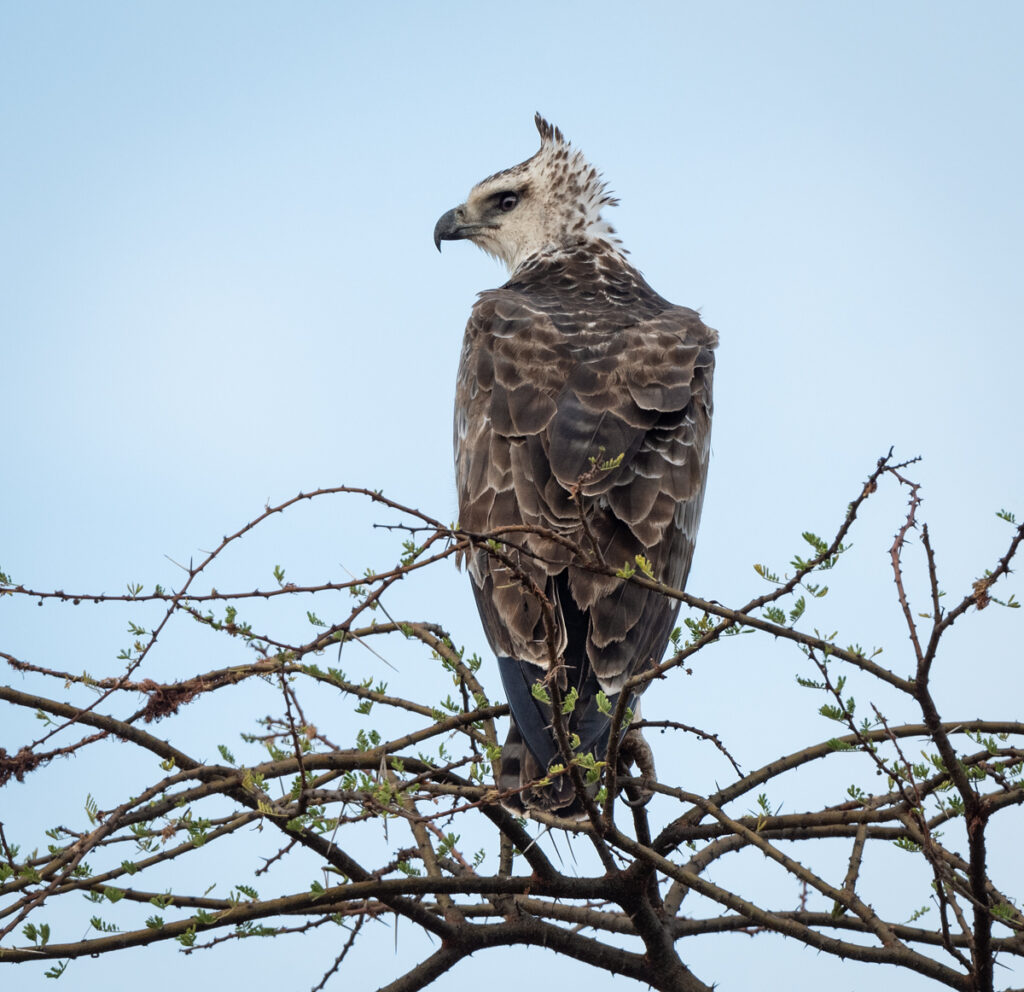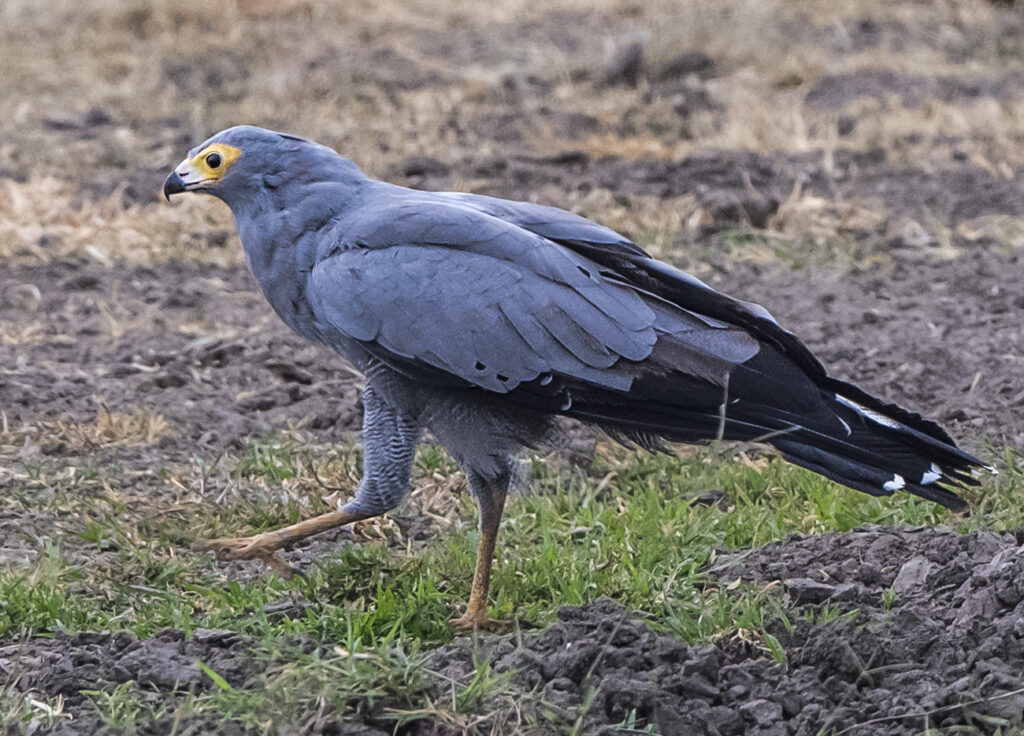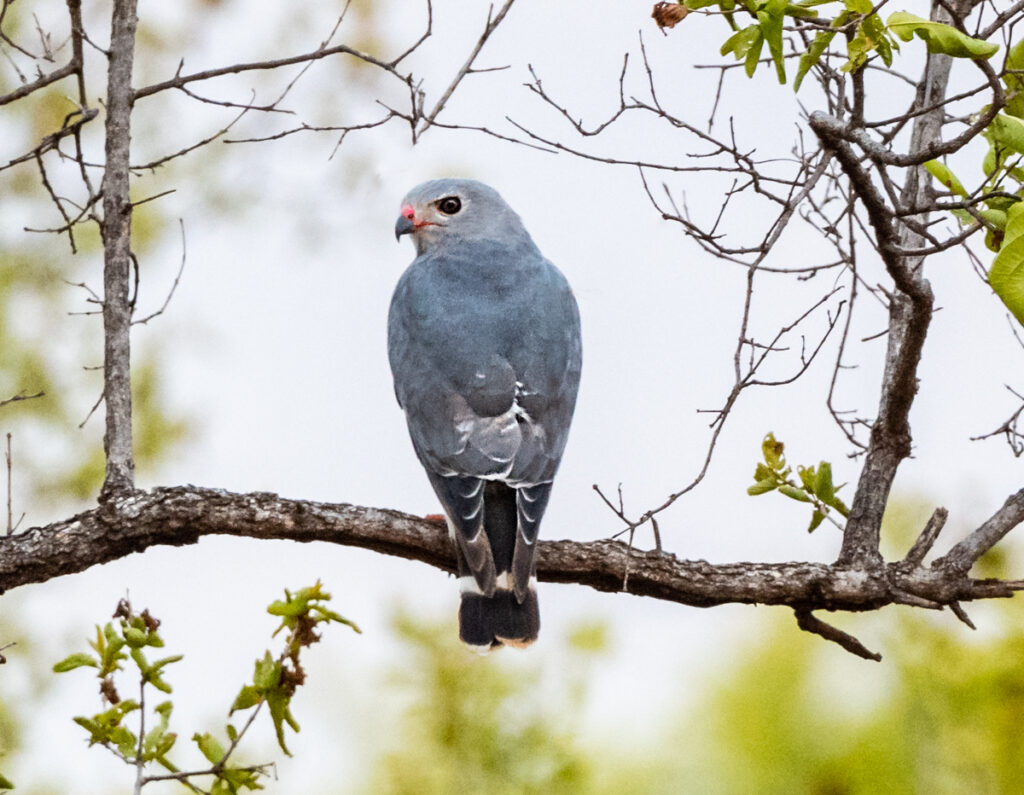
Martial eagles are one of Africa’s most powerful and largest eagles, with a wingspan reaching up to eight feet. They patrol vast territories, each breeding pair needing approximately 175 square kilometers of savannah, thornbush, and open woodland habitat in which to successfully live. This habitat, on the face of it, appears to be in abundance in countries like Kenya, Rwanda and the rest of sub-Saharan Africa, but the reality is bleak.

The main reason behind the decline in suitable habitat is the simple fact that there are more people using the land for their purposes, aided by the erosion of the ancient tradition of community land ownership, being replaced through the adoption of smaller, enclosed, Western-style land ownership instead. As this model is also subsidized by governments, an increase in fencing, tree-felling, and clearing and leasing land to companies has surged.
Bateleur eagles, their wings adorned with black and white markings, perform acrobatic maneuvers as they hunt, but even their guile and stealth can often be no match for the increasing amount of power lines crisscrossing the continent as the demand for electricity and internet places increasing pressure on local governments to hastily put the infrastructure in place. This haste almost always equates to cost-saving and corner-cutting, meaning that the resulting structures are very poorly constructed, and bird safety is the least of concerns, despite the fact that when a bird hits a power line, the resulting outage affects everyone and requires more money to rectify.

African harrier-hawks are also elegant gliders, notable for their long tails, searching out the grasslands for prey. Sadly, they too face a multitude of threats, including direct and indirect poisoning. Along with Martial eagles, Bateleurs and Lizard buzzards, these battleship-gray hunters are perceived by farmers as threats to their livestock, and they resort to lacing carcasses with poison, which also risks poisoning scavengers like vultures and mammalian predators, disrupting the delicate balance of the ecosystem.

Perhaps the most widespread threat, however, is persecution. Local communities often view certain raptors, particularly Martial eagles, as a danger, not just to livestock but to themselves, and other birds are viewed as filthy scavengers spreading disease, and this misplaced fear leads to deliberate killing. But several conservation organizations have been working together for many years now, slowly gaining more traction and influence. Long ago they realized that, to help the birds, the best way is to involve communities, not only in conservation efforts but in learning about the lives of the birds themselves.
The Kenya Bird of Prey Trust (KBoPT) is just one of a number of crucial players in the fight to conserve these avian marvels. Through their dedication to outreach and education, the KBoPT is raising awareness about the challenges faced by birds of prey at the same time as fostering a culture of appreciation for their vital role in the environment. Alongside the KBoPT, the Kenyan Wildlife service, The Peregrine Fund, Birdlife Africa, and the Maasai Mara Wildlife Conservancies Association, also works with schools, community outreach programs and interactive events and festivals, all with an aim to educating children, and adults: farmers, engineers, government officials, power companies; as many diverse factions of humanity as they can. Children are fascinated with the rescued birds brought in by the local volunteers and get to see up close something that few of us ever experience. By then explaining the ecological benefits that birds of prey bring to the world, about how they control rodent populations that can damage crops, act as ecosystem ‘cleaners’ by removing the carcasses of so many dead animals, and other pertinent facts about how they live and breed, a deeper understanding is fostered, dispelling myths and cultivating a sense of respect for these apex predators.

Coupled with active involvement in research and monitoring programs, these conservation heroes also provide valuable data which is crucial for informing conservation strategies and how to implement, and most importantly, measure, solutions.
There is still a long way to go in securing the future of Africa’s birds of prey, but thanks to the dedicated efforts of these organizations, there is hope. By empowering communities, fostering understanding, and advocating for bird-friendly solutions, they aim to ensure that African skies remain filled with the beautiful glory of so many exquisite, formidable, and necessary birds of prey.


